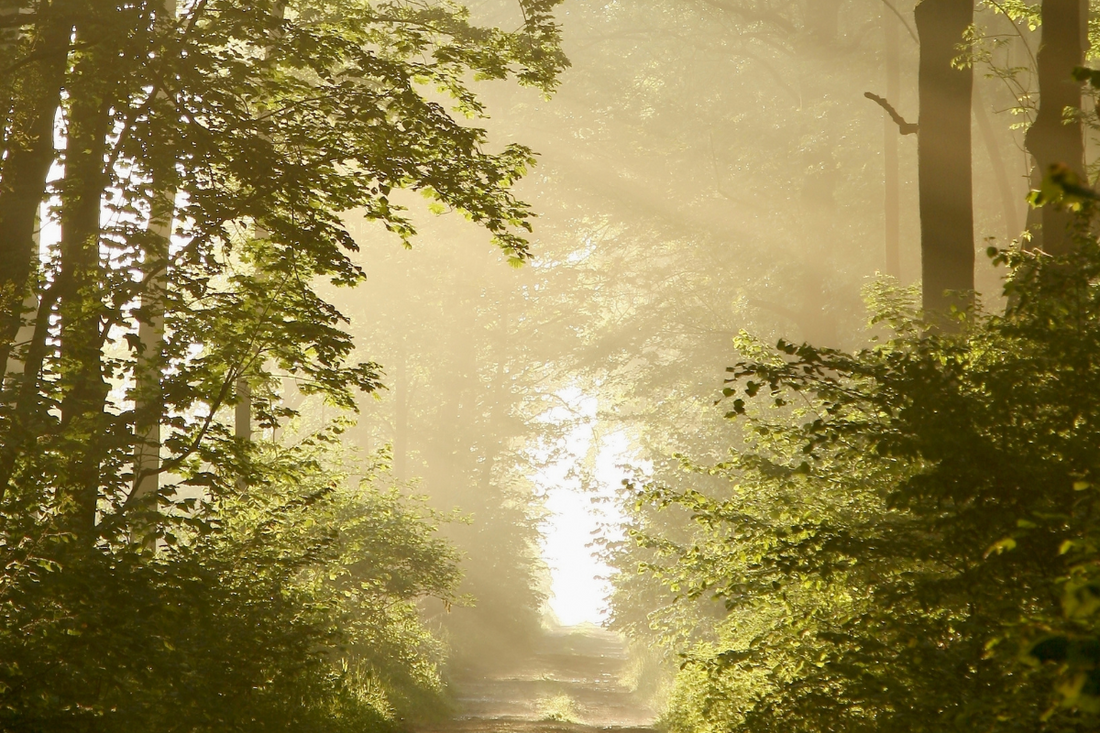The Japanese art of Forest Bathing is a restorative and healing mindfulness practice that restores the weary soul from modern day burnout. It is a therapeutic way to take a mini-escape and reconnect back with Mother Nature and everything that matters most.
Grab your earbuds and join me for a soothing guided forest bathe meditation to calm your senses, restore your wholebeing and bring you back to a grounded place. To begin, first find yourself a comfortable and safe space somewhere close to nature - it could be deep in the heart of the wilderness, in your backyard or on a bench seat in the city park. It is important to choose a green space; somewhere that has greenery, trees or some form of nature. Once you have settled into your space begin your journey by hitting play.
For more information on the how and why's of Forest Bathing, including the benefits - Read A Beginners Guide To Forest Bathing
TRANSCRIPT
Today we'll be practicing a simple and enjoyable mindfulness technique called Forest Bathing. In this practice, we retreat for a short time into the natural world to connect with our deeper selves and take a refreshing break from the stress of our fast-paced, cluttered lives.
In recent years, research has demonstrated that forest bathing offers a host of positive effects on the body, mind, and emotions. Yet it’s an easy-to-learn practice that you can use anytime you feel overwhelmed or stressed.
But these days, most of us live and work in cities, far removed from the peace and sanctuary of a true wilderness. So what if you don’t have access to a forest?
I love Forest Bathing because you can practice it anywhere there's a handy green space – whether in a deep woodland area or on a bench in a city park. The only thing you'll need to get started is - a tree!
Whether you can retreat from the world and devote hours to Forest Bathing or can only spare 15 minutes in your lunch break, it will help you slow down and reconnect with your still, calm center.
I also love that there are no hard and fast rules to follow. There’s no one ‘correct way’ to do it. So you have the space and freedom to be creative, explore what works for you, and include whatever brings you the greatest joy.
In this session, I'll guide you through some exercises to help you get started. Feel free to pause the recording whenever you feel you'd like to stop and spend more time enjoying particular sights, sounds or sensations.
So approach this short Forest Bathing session with an open heart and playful mind. Be patient and kind to yourself, and most of all, enjoy taking a break!
To begin seek a natural space where you feel safe and comfortable, I will give you a moment to settle in.
First, whether you’re sitting on the ground, on a blanket, or on a bench – take a few seconds to settle in and get comfortable.
In some meditations, remaining motionless is an essential part of the practice, but this isn’t one of them.
So if you feel the urge to move during our session, that’s OK. Even if you want to stand up and move around at any point, that’s fine too.
Now let's start by inhaling deeply and exhaling fully. (pause) Do that two more times. (pause)
Now your body is settled into this chosen space, where are your thoughts? Take a moment to notice what's on your mind right now. (pause)
It can take a little time to settle the mind. But for the next 15 minutes, I invite you to leave the future and the past to one side.
You'll be able to return to those essential thoughts when we've finished.
And now, let’s consider how you’re feeling at this moment. Are you stressed, calm, happy, or maybe anxious? Take a few moments to acknowledge how you’re feeling – no need to judge or change, just notice. (pause)
And as we start, let’s set an intention for this practice. The only aims are to stay present during the experience. And to savor these unique moments of stillness in the natural environment.
If you’re ready, let’s begin our forest bath.
If it feels comfortable for you, go ahead and close your eyes. Or, if you prefer, lower your gaze and let the muscles around your eyes soften.
Become aware of any tension in your face. Let the muscles of your forehead and around your mouth soften.
Take a moment to consider that the trees around you are breathing out oxygen to nourish every cell in your body. And once again, fill your lungs with that pure, life-giving air. Then exhale - slowly.
Now, I invite you to focus on your sense of hearing. Just listen.
Listen to the noises that surround you. (pause)
You may be hearing the sounds of the forest or the sounds of the city in the distance– they’re both interesting in their own way. Take a few moments to really hear them. (pause)
There’s no need to label them or judge them as 'good' or 'bad' sounds. (pause)
Become the observer. Tune into the sounds of nature if you can and mute the volume of any sounds and noises that are not natural. Take a moment to breathe in and appreciate the natural soundscape that surrounds you for a few moments. (pause)
When you’re ready, can you hear the most distant sound? How far away is it? (pause)
And now, can you zero in on the sound that’s closest to you? (Pause). Perhaps the singing of a bird or the rustling of leaves. Take a few moments to savor that sound. (pause)
When you’re ready, return to the full spectrum of sounds surrounding you and just enjoy them for a few moments. (pause)
If you want to stay longer, pause this recording and return to it when you’re ready to move on.
Now, I’d like to move on to our sense of sight.
I invite you to lift your head and open your eyes fully. It’s time to look at everything around you in your chosen natural space.
Start by lifting your gaze to the skies.
Notice the colors, the patterns, the textures of the clouds, and the play of light and shadows.
If they’re moving, notice how swiftly they pass and change.
If the sky is cloudless, notice that vast calm expanse.
There’s no need to predict what will happen in the future. There’s no need to judge the sky. Just notice it as it is right now, at this moment. (pause)
Then when you’re ready, move your gaze to take in the landscape.
Look into the distance, and observe it as a whole. Notice how many colors you can see, the shapes, the shadows, and the movement of the trees. (pause)
If branches and leaves are dancing in the wind, enjoy the sensation of that same breeze as it brushes against your skin.
Please take a few moments to enjoy and immerse yourself in your surroundings, focusing on small details as they catch your eye.
Then, select one particular tree, one that’s close by. Then, really look at that tree, as if it's the first tree you've ever seen in your life.
How old does this tree seem? Is it young and full of life force? Or is it old and in decline?
Start by looking closely at its trunk and the visible roots. How many colors can you notice? (pause)
Take your time to observe. What does the texture of the bark seem like– smooth or rough? Pitted or peeling away in places?
Now take a few moments to observe the pattern of the branches as they fan out from the tree. (pause)
Are they visible, or perhaps hidden by leaves? And the leaves – notice the myriad colors and shapes.
Let your gaze drop down once more to the base of the tree. Is it covered with leaves that have fallen at the end of their lifecycle? Is there grass, moss, or bare earth?
Consider the colors and textures you notice at the base of the tree. (pause)
If you’ve been sitting for a while, I invite you to stand up and move around freely.
Feel the texture of the ground beneath your feet as you move.
And let’s continue our sensory journey by focusing on our sense of touch.
Move slowly towards your chosen tree. Reach out, and explore the texture of the bark with your fingertips. How does it feel? Is it warm or cool to the touch? (pause)
If you can reach the leaves, take one in your palm. Feel its weight, smell it. How many colors can you see? Notice its shape and the pattern of its veins.
If living leaves are out of your reach, bend down and pick up one that’s fallen.
Then let your fingers touch the earth.
Look carefully and notice the living creatures around the base of the tree – ants, beetles, and unknown insects. All going about their natural business.
No need to judge – just take a few moments to notice the teeming life around every tree and all over the forest (or park) floor.
And by now, you may decide to sit down again, or prefer to keep wandering slowly around your chosen natural space.
To help you stay present and continue basking in these moments of pure sensual enjoyment, focus on each sense as you continue your forest bathing.
Focus on what you can hear, then turn your attention to what you can see, what you can feel, and so on. (pause)
Before we end the practice, integrate all the sensations. Take a few last moments to drink in the rich beauty and wonder of the natural world you've just been exploring. (pause)
Feel the stillness and joy. Feel the life force around you, helping you restore your depleted energies and reconnect with your deepest self. (pause)
And before we end, let’s remind ourselves of the intention we set at the start of this practice - simply to enjoy these moments immersed in
Although there was no focus on achieving any particular goal – you may feel changed – perhaps with a deeper connection with nature and the world beyond our stress-filled, techno-driven everyday lives. Maybe you fill a little more stillness within. A little less stressed and a little more contented with the here and now
To close the practice, let’s take a final deep inhalation and exhale fully. Take a. moment for appreciation for this moment – in the here and now. (pause) Then, move and stretch out in any way that feels good for you.
Your practice is now complete.
Thank you for taking the time to join me today.
I hope you've enjoyed this exploration of forest bathing and that you’ll return to the practice, again and again, to refresh, restore and reconnect with the natural world that is, after all, our true home.

